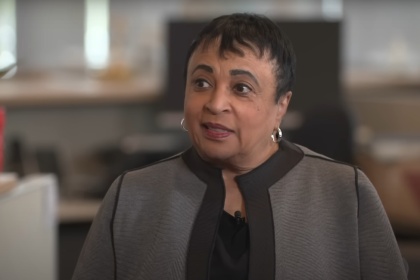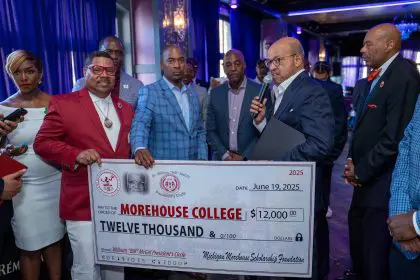The power of storytelling has always been at the heart of Black resistance. Long before social media activism and viral videos exposed injustice, enslaved Black Americans wielded their narratives as weapons against oppression. These accounts, penned by those who lived through the horrors of slavery, did more than document history; they sparked a revolution in consciousness that continues to resonate with contemporary struggles for equality.
The revolutionary act of telling our stories
In a time when literacy itself was considered an act of rebellion, enslaved individuals risked severe punishment and death to document their experiences. Between 1760 and the end of the Civil War, approximately 100 formerly enslaved or fugitive individuals managed to circulate their autobiographies throughout the United States. These weren’t just personal accounts; they were manifestos of humanity that challenged the very foundations of American society.
The significance of these narratives cannot be overstated. After emancipation in 1865, at least 50 more formerly enslaved individuals added their voices to this growing chorus of testimony. The 1930s marked another crucial moment when the WPA Federal Writers’ Project preserved the oral histories of 2,500 former slaves, creating an invaluable archive spanning 40 volumes. This collection serves as a bridge between generations, connecting past struggles with present-day movements for justice.
Breaking chains through literacy
The act of reading and writing represented more than just education; it was a fundamental tool of liberation. Slave owners understood this power, which is why they violently suppressed literacy among enslaved people. Yet, this suppression only highlighted the revolutionary potential of the written word. Those who learned to read and write often did so in secret, understanding that knowledge was the key to both mental and physical freedom.
Olaudah Equiano’s narrative, published in 1789, stands as one of the earliest and most influential accounts. His two-volume work traced his journey from West Africa through the brutal middle passage to eventual freedom in Britain. The narrative did more than expose the horrors of the transatlantic slave trade — it demonstrated the intellectual capabilities of Black individuals at a time when their humanity was being systematically denied.
Resistance through documentation
The tradition of resistance through documentation found its fullest expression in 1845 with the publication of a narrative that would become a cornerstone of American literature: Narrative of the Life of Frederick Douglass, An American Slave, Written by Himself. This account detailed not only the physical brutality of slavery but also the psychological warfare waged against enslaved people. The author’s journey from enslaved child to free man and renowned orator proved that intellectual freedom was just as crucial as physical liberation.
In 1861, history was made when the first autobiography by a Black woman who had been enslaved was published: Harriet Jacobs’ Incidents in the Life of a Slave Girl. This groundbreaking work exposed the specific terrors faced by enslaved women, including sexual exploitation and the heart-wrenching struggle to protect their children. The author’s detailed account of her resistance against her enslaver’s advances and her determination to secure freedom for herself and her children continues to inspire readers today.
Legacy for modern movements
These narratives laid the groundwork for contemporary Black literature and activism. Their influence can be traced through the Civil Rights Movement, the Black Power era. and into modern social justice movements. Works like Toni Morrison’s Beloved draw direct inspiration from these early accounts, continuing the tradition of using personal narrative as a tool for social change.
The power of these narratives lies in their ability to connect past and present struggles. They remind us that the fight for justice and equality has always required both physical resistance and intellectual warfare. In an era where attempts to sanitize history threaten to erase these crucial stories, preserving and sharing slave narratives becomes an act of resistance itself.
Preserving our history, empowering our future
The significance of slave narratives extends beyond their historical value. They serve as blueprints for resistance, demonstrating how documentation and storytelling can challenge systemic oppression. These accounts show that the path to freedom requires not only physical courage but also the bravery to speak truth to power.
Modern readers find in these narratives a reflection of contemporary struggles. The strategic use of literacy as a tool for liberation parallels today’s use of digital platforms to document and resist injustice. The personal becomes political as individual stories contribute to larger movements for social change.
These narratives remind us that our ancestors were more than victims; they were strategists, intellectuals and freedom fighters who used every tool at their disposal to resist oppression. Their stories continue to teach us about the power of documentation, the importance of bearing witness and the revolutionary potential of telling our own stories.
As we face modern attempts to suppress history and silence marginalized voices, these narratives remind us of the transformative power of truth-telling. They stand as testaments to the endurance of the human spirit and the ongoing struggle for justice. By preserving and sharing these stories, we honor our ancestors’ resistance while empowering future generations to continue the fight for equality.
The legacy of slave narratives lives on in every tweet, blog post and viral video that exposes contemporary injustice. They remind us that documentation is not just about preserving history; it’s about creating change. In an era where truth itself is under assault, these narratives provide a blueprint for resistance through storytelling, showing us how to transform personal pain into collective power.
















